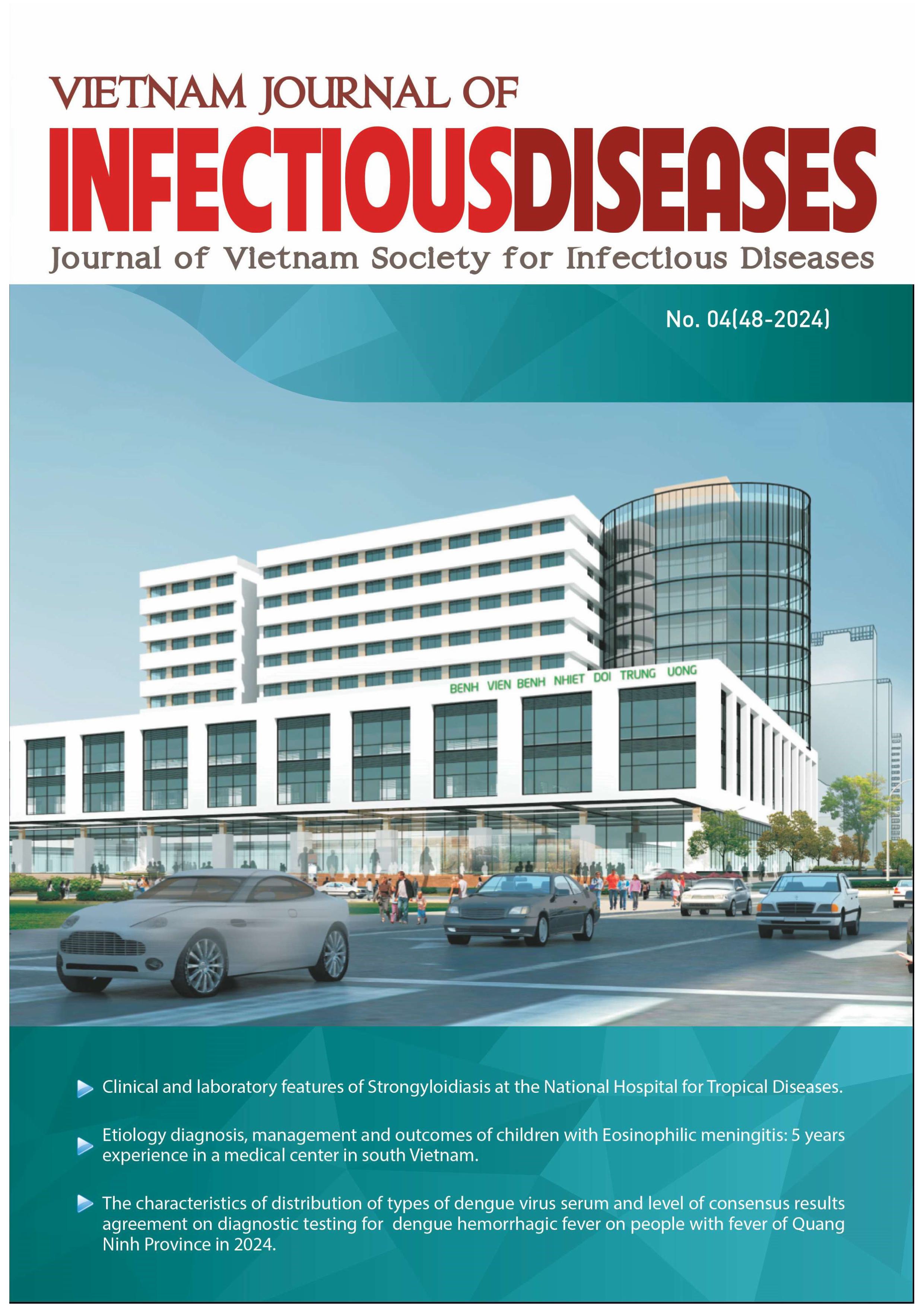LEVEL OF AGREEMENT OF THE HBsAg TEST IS EQUAL RAPID AND AUTOMATIC IMMUNOLOGY TEST METHOD IN SCREENING FOR HEPATITIS B VIRUS
Nội dung chính của bài viết
Tóm tắt
Objectives: The study aims to evaluate the level of consensus of HBsAg screening test using rapid test and automated immune testing methods in hepatitis B screening at Lao Cai Provincial General Hospital from May, 2024 to - June, 2024.
Methods: Cross-sectional descriptive study.
Results and conclusions: The study included 980 patients screened for HBsAg using rapid test and automatic immune testing from May, 2024 to June, 2024. The similarity between the two rapid and immunological test methods has Kappa = 0.92, almost complete agreement. The sensitivity of the rapid test is 98.9%, the specificity of the rapid test is 98.5% when considering the immunological method as the gold standard, the rate of HBsAg(+) screening results is > 70 COI screened by the method. Autoimmunity is 10.1%. The age group with the highest incidence is from (30 - 50 years old) accounting for 13%. The proportion of men is 11%, women is 8.5%, Patients residing in rural areas account for a higher rate of 12.2%, and 7.3% in urban areas with P < 0.05. The Tay ethnic group accounts for the highest proportion at 14.5%. There are 2.4% of HBsAg screening cases with indeterminate results (1 - 70 COI). The rate of HBsAg(+) carrier is 10.1%. The similarity between the two rapid and immunological test methods has Kappa = 0.92, almost complete agreement. The sensitivity of the rapid test is 98.9%, the specificity of the rapid test is 98.5%.
Chi tiết bài viết
Từ khóa
Consensus, rapid test, immunity, HbsAg
Tài liệu tham khảo
2. Thuvienphapluat.vn. Decision 1868/QD-BYT 2020 promulgating Guidelines for testing for hepatitis B C virus. Law library https://
thuvienphapluat.vn/van-ban/The-thao-Y-te/Quyetdinh-1868-QD-BYT-2020-ban-hanh-Huong-danexamination-of-virus-viem-gan-BC-465161.aspx
3. Pham VH, Tran HT & Nguyen HB Current status of hepatitis B in voluntary blood donors at Hanoi Medical University Hospital in 2021. VMJ 516 , (2022).
4. Rate of hepatitis B virus infection and some related factors in Khmer ethnic people in Cau Ke district, Tra Vinh province in 2021. https://
tapchiyhocvietnam.vn/index.php/vmj/article/view/2031/1833.
5. Thanh PN Current status, some factors related to hepatitis B virus infection in adults in the Central Highlands region and the effectiveness of infection prevention interventions in 2021.
6.Dr. Sarika Gha , Dr. Payal Dutta. Comparative Evaluation of Electrochemiluminescence (ECLIA) with Immunochromato graphic Test (ICT) Available for Hepatitis B Surface Antigen. (2018).
7. Shahid M. et al. Comparative Analysis of Electro-Chemiluminescence Immunoassay, Enzyme-Linked Immunosorbent Assay and Rapid
Immunochromatographic Test for Detection of Hepatitis B Surface Antigen. CHRISMED Journal of Health and Research 10 , 110 (2023).
8. thuvienphapluat.vn. Decision 26/QD-BYT/2014 document Guidance on specialized technical procedures in Medical Microbiology. Law Library https://thuvienphapluat.vn/van-ban/The-thao-Y-te/
Quyet-dinh-26-QD-BYT-2014-tai-lieu-Huong-danquy-trinh-ky- medical-microbiology-290453.aspx.
9. Dipmala Das1, Sudipta Roy2, & , Suman Mondal3. Evaluation of Performance Characteristics of Enzyme Chemiluminescence Immunoassay (ECLIA) and Rapid Diagnostic Test (RDT) for HBV,
HIV and HCV Infections. (2018).
10. Okawa, S. et al. Comparison between a rapid diagnostic test and dried blood spot-based immunoassay for hepatitis B surface antigen testing: Performance and cost implications in a populationbased serosurvey in Vietnam. International Journal of Infectious Diseases 125 , 51-57 (2022).


